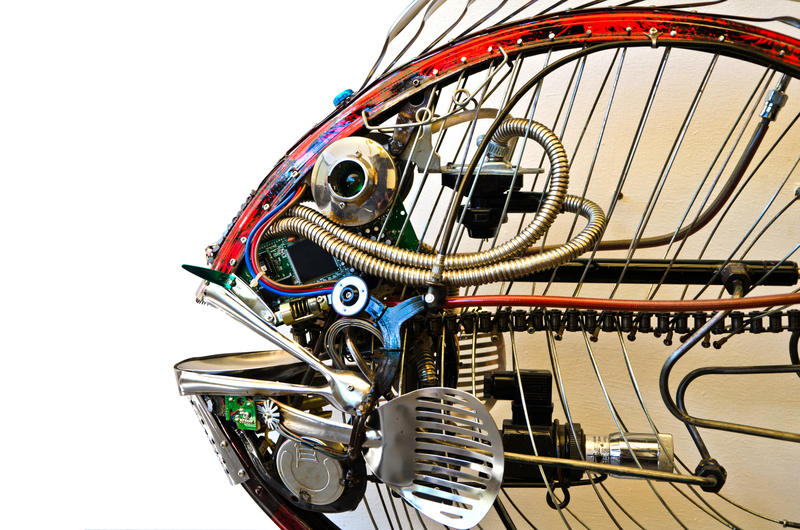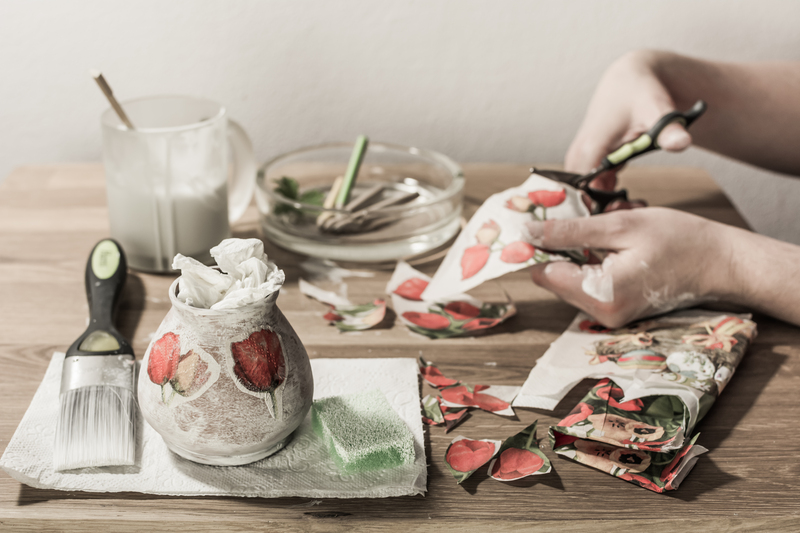Minimalist Living: Finding Joy in Less Clutter
In today's fast-paced world, our lives are often filled with an overwhelming amount of "stuff." The culture of consumerism encourages us to buy more, fill our homes with the latest gadgets or decor, and seek happiness in material possessions. However, a growing movement encourages us to take a step back and embrace a different way of living. Minimalist living, also known as minimalism, is all about finding happiness and contentment in having less. In this article, we'll explore the philosophy behind minimalist lifestyle, practical steps to declutter your home, and how a simpler environment can provide joy, balance, and peace.
Understanding the Essence of Minimalist Living
Minimalism isn't just about white walls and empty rooms--it's a philosophy that emphasizes intentional living. At its core, minimalist living means removing unnecessary items and distractions from your life, so you can focus on what truly matters. It's about ownership with purpose, quality over quantity, and creating a calm, comfortable environment that supports your well-being.
The Philosophy Behind Minimalist Living
- Intentional Choices: Every object in your space should have a clear purpose or bring joy.
- Freedom from Excess: By eliminating what you don't need, you free up mental and physical space.
- Mindful Consumption: Minimalism encourages you to pause before purchasing, thinking long-term rather than seeking instant gratification.
- Value Experiences: Minimalists often prioritize experiences, relationships, and personal growth over material accumulation.

Benefits of Decluttering and Minimalist Living
Adopting a minimalist lifestyle can profoundly impact various areas of your life. Here's how :
- Mental Clarity: A clutter-free space translates to a clearer mind and reduced stress.
- Increased Productivity: Fewer distractions mean it's easier to focus on your goals.
- Financial Freedom: By spending less on non-essentials, you can save money and invest in what truly matters.
- Improved Relationships: Less focus on things means more time for people and meaningful experiences.
- Environmental Impact: Owning less means consuming less, reducing your ecological footprint.
Minimalist Living and Mental Well-being
One of the most celebrated effects of minimalist living is its impact on mental health. Clutter has been proven to increase feelings of anxiety and overwhelm. By simplifying your environment, you create a space conducive to relaxation and creativity. This enhanced sense of calm is often the first step toward finding more joy with fewer possessions.
How to Embrace a Minimalist Lifestyle
Transitioning to a minimalist life may seem daunting, but it doesn't have to happen overnight. Instead, take it one step at a time:
1. Assess Your Space and Possessions
Begin by walking through your home and identifying areas that feel crowded or chaotic. Ask yourself, "Do I really need this?" or "Does this bring me joy?" Use these questions as guides for what stays and what goes.
- *Items unused for a year*
- *Objects with little sentimental or functional value*
- *Duplicate or broken items*
2. Start Small: One Room at a Time
Attempting to declutter your entire home in one go can be overwhelming. Start with a manageable space--like a kitchen drawer or your bedside table. As you see progress, you'll feel motivated to tackle larger areas.
- Choose a small area that needs attention.
- Remove everything from the space.
- Sort items into "keep," "donate," and "discard" piles.
- Return only the essentials to the space.
3. Adopt a "One In, One Out" Policy
To maintain your newly uncluttered spaces, implement a rule: For every new item that comes into your home, let one old item go. This method keeps accumulation in check and encourages mindful consumption.
4. Prioritize Quality Over Quantity
Minimalist living doesn't mean depriving yourself--it means choosing the best over the most. Invest in a few high-quality, versatile pieces instead of many lower-quality items.
- Sustainable furniture that's built to last
- Timeless clothing essentials
- Multi-functional items that serve more than one purpose
5. Digitize Where Possible
In our digital era, much of our clutter comes from paperwork. Scan important documents, receipts, and photos, then store them securely online. This reduces physical clutter while keeping you organized.
6. Practice Gratefulness
Minimalism and gratitude go hand-in-hand. By appreciating what you have, you'll feel less compelled to seek satisfaction through constant acquisition. Keep a gratitude journal or make a habit of reflecting on the simplest joys each day.
Designing Your Home for Minimalist Living
Creating a minimalist home doesn't require a complete overhaul or a massive investment. It's about intentional design and thoughtful curation.
Choosing a Minimalist Aesthetic
- Neutral Colors: Soft whites, greys, and earth tones create a calming atmosphere.
- Open Spaces: Allow room to move and breathe; avoid overcrowding rooms with furniture.
- Natural Light: Keep windows unobstructed for maximum sunlight.
- Simple Decor: Display only what you love or what inspires you--such as a favorite photograph or a single plant.
Functionality Meets Beauty
In a minimalist home, form follows function. Every item should both serve a purpose and fit beautifully in the space. Consider multi-use furniture, hidden storage, and sleek lines to maintain a clean, uncluttered look.
Minimalism and Sustainability: A Responsible Choice
Minimalist living isn't just good for your mental health--it's also an eco-conscious choice. Here's why:
- Less Production Waste: Owning fewer things reduces demand for mass production and packaging.
- Longer-Lasting Items: By purchasing durable goods, you decrease the frequency of replacements.
- Smart Disposal: Mindful minimalists recycle, repurpose, and donate, reducing landfill waste.
- Eco-Friendly Purchases: Many minimalists support brands with sustainable materials and ethical labor practices.
Overcoming Common Minimalist Living Challenges
Like any lifestyle change, embracing minimalism comes with its own challenges. Here are some common hurdles, and how to overcome them:
Letting Go of Sentimental Items
Many people struggle to part with items that hold emotional value. The key is to selectively curate what's truly meaningful. Consider keeping a memory box for treasured keepsakes and finding creative ways to honor memories without retaining excess belongings.
Fear of Missing Out (FOMO)
Our society often equates belongings with status or happiness. Remind yourself that minimalist living is about gaining, not losing--gaining freedom, clarity, and space for what matters most.
Family and Social Pressure
Sometimes, others may not understand or support your minimalist choices. Communicate your reasons, lead by example, and remain steadfast in your values. You may even inspire those around you!
Minimalist Living Beyond the Home
Minimalism doesn't stop at decluttering your physical space. Many minimalists find that the principles of less is more help in other areas of life, too:
- Digital Clutter: Unsubscribe from unnecessary emails, reduce social media use, and keep only essential apps.
- Minimalist Wardrobe: Build a capsule wardrobe with versatile, quality items.
- Time Management: Cut out unnecessary commitments and focus on activities that align with your values.
- Consuming Mindfully: Choose experiences, local businesses, and ethical brands.
Tips for Staying Consistent with Minimalist Living
- Regular Decluttering: Make it a habit to review and tidy your spaces every few months.
- Purchasing Pause: Before buying something new, wait 30 days to see if it's truly needed.
- Celebrate Small Wins: Every item you let go of opens space for something better--acknowledge your progress.
- Connect with the Minimalist Community: Online forums and social media groups can provide support, ideas, and motivation.
Frequently Asked Questions about Minimalist Living
Is minimalism right for everyone?
While minimalist living has broad appeal, it's not a one-size-fits-all solution. The key is finding a level of simplicity that feels comfortable and sustainable for your lifestyle. Minimalism is about intention, not deprivation.
Does living with less mean living with nothing?
Absolutely not! The idea is to keep what adds value and remove the rest. Minimalism is about prioritizing what enhances your life--whether that's art, books, or hobbies--while letting go of distractions.
Will decluttering take a lot of time?
Decluttering can be a gradual process. Start with just 10 minutes a day and grow from there. The results build up quickly and the emotional benefits are noticeable almost immediately.
Can I practice minimalism with children or a family?
Yes! Many families embrace minimalist living by teaching kids about mindful consumption and involving them in decluttering. It's a collaborative effort that helps everyone focus on what's truly valuable--time together and meaningful experiences.

Resources for Minimalist Living
- Books: "The Life-Changing Magic of Tidying Up" by Marie Kondo, "Essentialism" by Greg McKeown, and "Goodbye, Things" by Fumio Sasaki.
- Websites: The Minimalists, Becoming Minimalist, and Simple Lionheart Life.
- Documentaries: "Minimalism: A Documentary About the Important Things" (Netflix), "Tidying Up with Marie Kondo."
- Apps: Clutterfree, Tody, and Trove for digital organization.
Conclusion: Finding Joy in Less Clutter
Embracing minimalist living means choosing intention over accumulation. It's about creating a life filled with purpose, clarity, and joy--where every possession, task, and relationship has meaning. As you begin your journey toward a clutter-free home and lifestyle, remember: Minimalism is a personal path; there's no right or wrong way to practice it.
By letting go of excess, you open space--for happiness, creativity, and peace of mind. Start small, stay consistent, and discover how living with less can truly help you find more joy in everyday life.
Minimalist living is not just a trend; it's a mindful journey to a more meaningful life. Are you ready to find your happiness in less clutter?